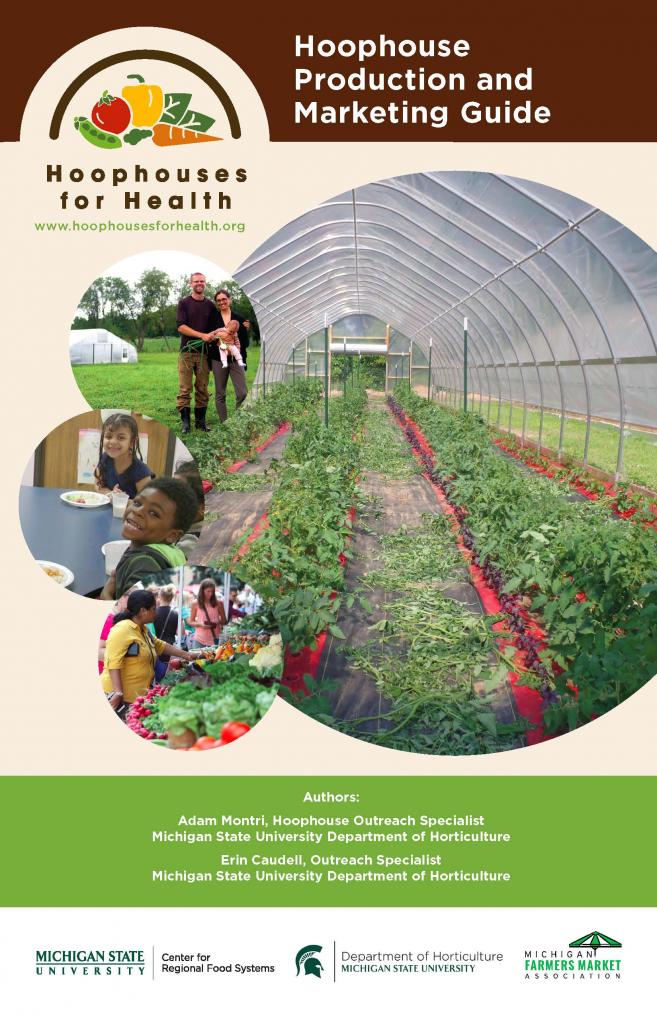Hoophouses for Health Continues to Support Farmer Profitability
Hoophouse Marketing and Production Guide helps farmers grow and price for institutional markets.

Hoophouses for Health played a vital role in my path toward farming by making it possible for my partner Franklin and I to build our farm’s first hoophouse. At the time we applied, we did not have a lot of money for infrastructure. The program model fit with our values, and we were excited that we could repay our loan with sales of vegetables to families in our area.
When I joined the Hoophouses for Health team as an Outreach Specialist several years later, the program was creating a farm to school option for farmers to repay loans with produce sold wholesale to schools and early care and education sites. By that time, I had some experience in selling wholesale, but I had not done much market analysis. I would occasionally ask a farmer friend how they priced similar produce, but I really hadn’t done my homework. To provide quality technical assistance, I had to do a much more thorough analysis of institutional wholesale trends, as the farmers I worked with also had questions about how to price and package products for different types of markets. Farmers that sell at local markets often confer with other farmers or calculate prices using production costs per square foot, but it can be hard to figure out how to price your wares if you don’t know others who are selling wholesale.
To meet this need, the program team gathered wholesale and retail pricing information from the 72 farmers in the program in addition to comparing prices to those in other areas of the state, farmers markets, and wholesale lists from Detroit and Chicago. As a new farmer looking to wholesale marketing, it is helpful to have a broad set of data to see the variation of pricing for hoophouse vegetables from the Upper Peninsula to down state Michigan.
The resulting Hoophouse Marketing and Production Guide helps farmers with planting information, expected yields, price ranges and packing sizes for retail and wholesale markets. Farmers have been excited to have the information all in one place and in an easily digestible format. It is a guide I wish I’d had when I started farming! The Hoophouses for Health team is glad to offer this guide as a quick reference for production tips and pricing differences of hoophouse-grown products for farmers in Michigan and beyond.
Hoophouses for Health is a collaboration of the Michigan Farmers Market Association, the MSU Center for Regional Food Systems, and the Michigan State University Department of Horticulture. Funding for the program was generously provided by the W.K. Kellogg Foundation as part of the Michigan Farm to School: Digging In and Taking Root project. New hoophouse loans are not available at this time, but assistance is still available for participating farmers completing payback on existing loans.



 Print
Print Email
Email

